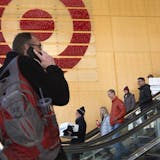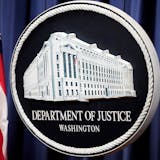The reason why flights from Minneapolis-St. Paul International Airport are so pricey comes down to this: Delta Air Lines.
The Atlanta-based carrier — the dominant airline at MSP, with 70% of its flight seats — drives domestic airfares there and pushed the airport to third most expensive on average at $456, per a SmartAsset study of Bureau of Transportation Statistics first-quarter data.
Delta, which declined to comment, hasn't been shy about its elite image, especially considering recent changes it made to make its clubs and SkyMiles program more exclusive. Its desirable nonstops appeal to the new class of "premium leisure" flyers as well as business travelers willing to pay higher fares for more plush seats and other perks.
"If you want to fly nonstop or you want to fly one of the most reliable airlines in the U.S. or you have one of the Delta co-branded credit cards or you're engaged with the Delta SkyMiles program, you're going to fly Delta," said Henry Harteveldt, a travel industry analyst who's president of Atmosphere Research Group.
The only more expensive airports than MSP are Anchorage and Washington Dulles in first and second, respectively. Charlotte and Salt Lake City rounded out the top five. Las Vegas offered the cheapest average fare at $270.
While MSP offers low-fare competition from Sun Country, Frontier and Southwest airlines, Delta's hub at MSP keeps the other major carriers away.
"If an airline has a hub at an airport, other airlines tend to avoid scheduling as many flights as they otherwise might," Harteveldt said. "They want to avoid getting into a battle for customers with that hub airline."
Airfares increased by 16% on average across the U.S. in the first quarter to $382. Keep in mind, many experts expected first-quarter demand — and subsequent prices — to be up this year compared to early 2022 when the COVID-19 omicron variant pushed people to avoid or cancel travel. And airlines are absorbing the same higher prices as everyone else on top of rising labor costs.



